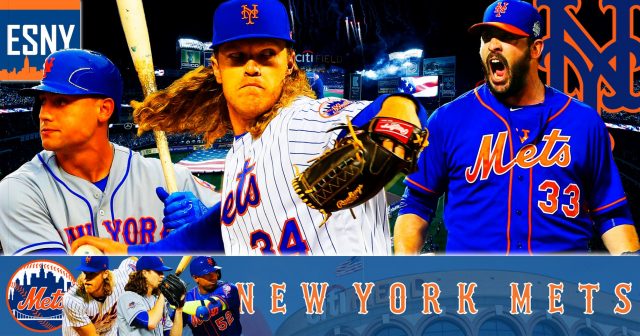A Tale of Two Pennants: Comparing The 2015 And 2000 New York Mets

Infield: Mike Piazza was the backbone of the 2000 Mets and a staple on the diamond.
The 2015 Mets have a solid bunch that makes up the infield, but it just doesn’t compare to the talent the millennium Mets had.
Mike Piazza wasn’t just the best player on the 2000 team, but a franchise icon. His 38 homers and 113 rbi’s led the Mets that season, as he cemented the middle of the lineup. It wasn’t just the number of home runs, but the tape measure shots (and cool bat flips) that made him so beloved by fans and feared by opponents. Sure, Travis D’arnaud is a promising young catcher of his own, but the catcher advantage clearly belongs to Piazza.
Moving 90 feet down to first, you can currently find Lucas Duda, who has enjoyed several streaky, yet powerful seasons at first base. But wait, who remembers Todd Zeile?! He played for just two seasons in Queens, but 22 dingers, 79 rbi’s, and an .823 OPS in 2000 made him a key contributor to that team. Often overlooked due to Piazza’s big numbers, his short stint in New York, and a disappointing 2001 season, Zeile was more than solid on an infield with several big bats.
Speaking of those other big bats, let’s not forget how good Edgardo Alfonzo was manning second base. He posted a WAR of at least 6.0 three times during his Met tenure, including a career best 6.4 WAR in 2000. His .324/25HR/94RBI slash line earned him an all star appearance as well. In comparison–Daniel Murphy has had a WAR of 3.0 once and posted a WAR of just 1.4 this season. Remember, that doesn’t count his historic 2015 postseason, but it speaks to how good Alfonzo was. He and Zeile made for an excellent offensive duo on the right side on the diamond. Neither player was bad defensively, but it was their bats that did the damage.
Sliding over to short, one of the most beloved Mets in recent memory will take the field on Tuesday night. Yes, young Wilmer Flores will look to continue his magic carpet ride of a season in Kansas City. He and the recently injured Ruben Tejada solved the difficult shortstop question the Mets had coming into the season.
Ironically, the 2000 Mets also had a tricky shortstop situation, with a committee approach, too. Melvin Mora, Mike Bordick, Kurt Abbott and Rey Ordonez manned the spot for the blue and orange. Ordonez was a defensive wiz, Abbott a career utility man, Bordick a one time all star, and Mora was just a kid, who eventually found success in Baltimore. But for one year in 2000, these were the guys who glued together the shortstop position. They hit 16 homers and knocked in 72 collectively–decent production for a defensively minded position. No one player had a strong individual season, but each did his part on this pennant winning team.
Lastly on the diamond is the hot corner. Just about any Met fan who thinks about third base thinks about David Wright. And honestly, why the heck wouldn’t you? The captain has given his heart and soul for this team, and finally gets rewarded with his first World Series appearance. Fifteen years earlier, it was Robin Ventura who played third for the ‘Amazins.
Ventura only spent three seasons in New York, but bopped 24 homers and knocked in 84 runs in 2000. His .234 average was one of the worst of his career, but the sure handed third baseman’s defense and power played a vital role. His game 3 homerun in the World Series helped spark the Mets lone victory in the Fall Classic.
So which infield is better?
Both the 2015 and 2000 Mets have plenty of talent on the infield. The all star caliber seasons of Piazza and Alfonzo tip the scales and give the 2000 team a distinct advantage over the current infield.
Central jersey born and bred. Monmouth University alumnus. Sports are not games, rather ways of life. Twitter: @Gcam92
Contact: G.Cambareri123@gmail.com






